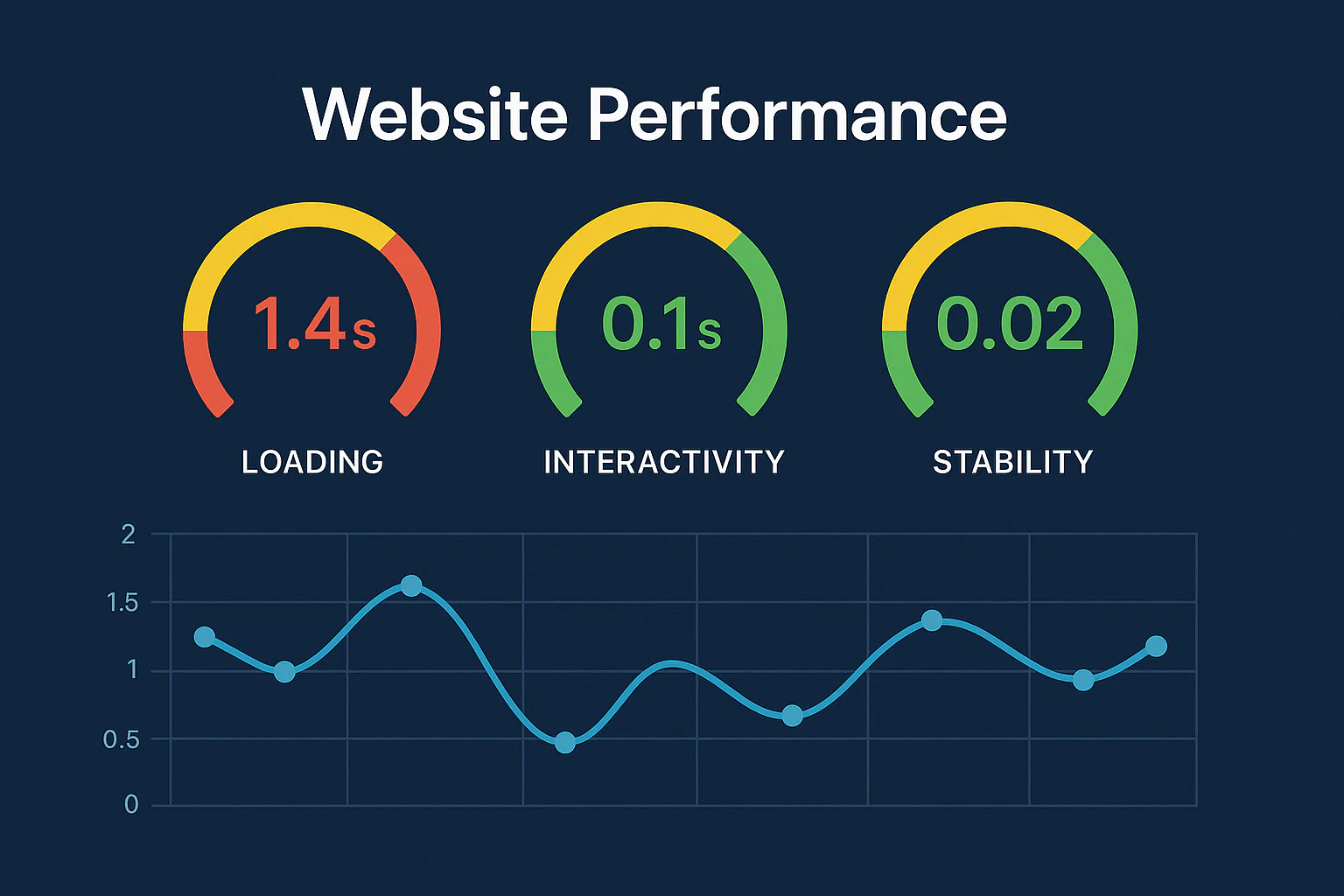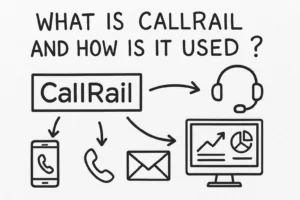✅ What We’ll Cover in This Article
- What Core Web Vitals are in plain English—and why Google cares about them
- Why business leaders and marketing teams often ignore them (and the risks of doing so)
- The three Core Web Vitals you must track (loading, interactivity, visual stability)
- Practical ways to measure and improve them without heavy jargon
- How strong vitals translate to visibility, conversions, and real revenue impact
Introduction: The Question You’re Probably Asking
“Core Web Vitals—what are they, and why do they matter for my business website?”
It’s a fair question. For many leaders, website metrics sound like inside baseball for developers. But Core Web Vitals aren’t just technical trivia—they’re Google’s way of judging whether your site feels fast, responsive, and stable for real visitors .
And here’s the reality: If your site performs poorly on these measures, your search rankings, conversions, and customer trust all take a hit.
What Are Core Web Vitals?
Core Web Vitals (CWV) are three specific website performance metrics defined by Google :
- Loading speed (Largest Contentful Paint / LCP): How quickly the main content on your page becomes visible.
- Interactivity (First Input Delay / FID, moving to Interaction to Next Paint / INP): How fast your site responds when someone clicks or taps.
- Visual stability (Cumulative Layout Shift / CLS): Whether the page stays steady or jumps around as it loads.
Think of them like a test drive. Does the car start quickly, does the steering respond when turned, and does the dashboard stay secure? Google measures your site the same way.
Doceo Pro Tip: Don’t confuse Core Web Vitals with overall site speed. A page can load quickly but still frustrate users if buttons jump or forms lag.
Why They’re So Often Overlooked
Many organizations miss Core Web Vitals for three reasons:
- They seem too technical. Business leaders hear acronyms like “CLS” and tune out.
- They’re hidden issues. A page might look fine in the office but crawl on a mobile device.
- They don’t break the site. Unlike a 404 error, poor vitals don’t stop the site from working—they just silently erode rankings and conversions.
This is why they slip off the radar until someone notices falling organic traffic or lead volume.
Micro-scenario: A professional services firm launched a beautiful WordPress site with strong messaging. But because image sizes weren’t optimized, their LCP score tanked on mobile. Within three months, they saw a 20% dip in organic form fills.
Why You Should Pay Attention
Ignoring Core Web Vitals comes with measurable costs:
- Search visibility: Google has confirmed CWV are ranking factors.
- User trust: Pages that jump or lag feel unprofessional and frustrate visitors.
- Conversion impact: A one-second delay in load can cut conversions by 7–10% (varies by industry, based on recent studies).
ROI Impact Example
Let’s do simple math:
- Your site generates 300 leads/month with a 3% conversion rate.
- If poor CWV reduce conversions by just 10%, you lose ~30 leads/month.
- Over a year, that’s 360 leads—likely worth hundreds of thousands in revenue depending on your average deal size.
Doceo Pro Tip: Frame CWV in dollars, not just milliseconds. That’s what gets executive attention.
How to Measure Core Web Vitals
The good news? You don’t need to be a developer to check your vitals.
- Free tools: Google PageSpeed Insights, Search Console, or Chrome DevTools.
- Key filters: Always test mobile first—it’s where most failures show up.
- What to look for: Pages flagged as “Needs Improvement” or “Poor” in any of the three metrics.
How to Improve Them
Improvement usually comes down to a handful of practical steps:
- Optimize images: Compress and use modern formats (WebP, AVIF).
- Reduce third-party scripts: Every tracking tag adds delay.
- Use caching/CDNs: Deliver assets closer to the user.
- Reserve space for elements: Prevents content from “jumping” as ads, images, or fonts load.
- Review hosting and WordPress setup: Weak hosting or bloated themes drag scores down.
Scenario: One Doceo client improved their LCP simply by switching from uncompressed hero images to WebP. Result: 0.8s faster loads and a noticeable lift in form completions.
FAQ: Quick Answers About Core Web Vitals
Are Core Web Vitals only about SEO?
No. They influence rankings, but the bigger effect is on user experience and conversion.
Do Core Web Vitals apply to all industries?
Yes. Whether you’re in healthcare, finance, or professional services, a bad user experience costs trust and business.
How often should I check them?
Quarterly at minimum, or any time you redesign, add plugins, or shift hosting.
Can WordPress sites score well?
Absolutely—if optimized. Many poor scores stem from unoptimized plugins or hosting.
Do I need a full redesign to fix Core Web Vitals?
Not usually. Targeted fixes (images, caching, scripts) often deliver big wins without a rebuild.
Closing Thought
Core Web Vitals may sound like developer details, but they’re business metrics in disguise. If your site is slow, unresponsive, or unstable, it costs you traffic, leads, and revenue.
👋 Want to learn more? Doceo’s Marketing Advisors are here to help. Schedule a complimentary consultation today → Let’s Talk





